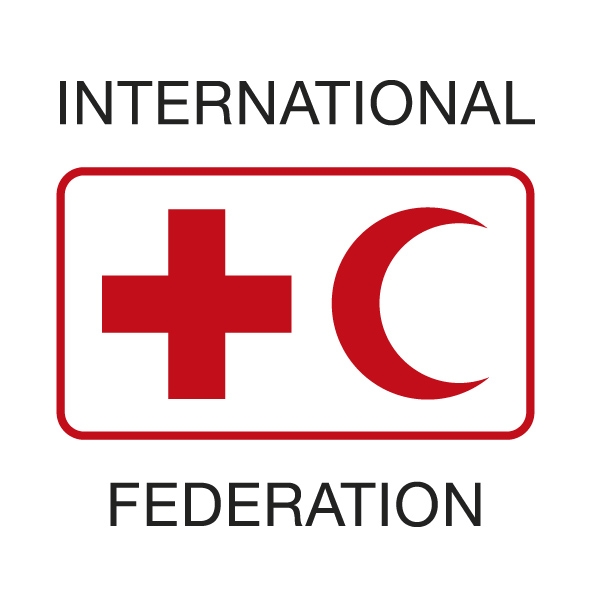Unprecedented Humanitarian Needs While Simultaneously Hampering Relief Efforts
140 million people have been affected by floods, droughts, storms, and wildfires during the pandemic

Extreme weather events and the pandemic have hammered hundreds of millions of people simultaneously, according to a report by the International Federation of Red Cross and Red Crescent Societies (IFRC). They say that the combination of the climate and Covid crises has created ‘unprecedented’ humanitarian needs while simultaneously hampering relief efforts.
140 million people – equivalent to almost the whole population of Russia – have been affected by floods, droughts, storms, and wildfires during the pandemic, according to the IFRC report. A further 660 million people over 65 or under five years old were hit by heatwaves, around twice the population of the USA.
The single most deadly event (for which data is available) since Covid hit was the 2020 heatwave in Western Europe, with over 11,000 deaths across Belgium, France, Germany, Netherlands, Switzerland, and the UK. While Cyclone Amphan made the most severe climate crisis during the pandemic affecting 20.6 million people across India, Bangladesh and Sri Lanka. Heatwaves made up two of the top three most deadly events, and every heat wave that happens today is made more likely and more intense by climate change. Close to 2000 were affected in India due to floods in June 2020.

Scientific event attribution studies have found that many specific events were made stronger, longer, or more likely due to global heating. Some of the events – such as the 2021 heatwave in the Pacific Northwest – would have been ‘virtually impossible’ in a world without climate change.
Climate change makes existing vulnerabilities and threats worse, and it has particularly hit those already made more vulnerable by the pandemic. For example, in Syria and Iraq the ongoing drought is reducing both water availability and electricity supply as hydroelectric dams run dry, impacting hygiene and healthcare. During storms in Honduras and South Asia, relief operations had to find extra public shelters for those fleeing their homes so that social distancing could be maintained. Smoke from wildfires in the USA and elsewhere irritated people’s lungs and led to an increase in Covid cases and deaths.
The IFRC says that communities need more help to adapt to climate change, and that addressing the climate and pandemic together will lead to a more economically resilient recovery. More than 139 million people hit by climate crisis and COVID-19, new
IFRC analysis reveals Since the beginning of the COVID-19 pandemic,climate-related disasters have affected the lives of at least 139.2 million people and killed more than 17,242.
This is the finding of a new analysis published by the International Federation of Red Cross and Red Crescent Societies (IFRC) and the Red Cross Red Crescent Climate Centre, on the compound impacts of extreme-weather events and COVID-19. A further estimated 658.1 million vulnerable people have been exposed to extreme temperatures. Through new data and specific case studies, the report shows how people across the world are facing multiple crises and coping with overlapping vulnerabilities.
The paper also highlights the need of addressing both crises simultaneously as the COVID-19 pandemic has affected livelihoods across the world and has made communities more vulnerable to climate risks.
The IFRC President, Francesco Rocca, who presented the new report at a press conference in New York, said: “The world is facing an unprecedented humanitarian crisis where the climate change and COVID-19 are pushing communities to their limits. In the lead up to COP26, we urge world leaders to take immediate action not only to reduce greenhouse gas emissions, but also to address the existent and imminent humanitarian impacts of climate
change”.
The report comes a year after an initial analysis of the overlapping risks of extreme-weather events that have occurred during the COVID-19 crisis. The pandemic continues to wreak havoc, with direct health impacts for millions of people around the world, but also a massive indirect impact, in part due to the response measures implemented to contain the pandemic. Food insecurity caused by weather extremes has been aggravated by COVID-19. Health systems are pushed to their limits and the most vulnerable have been the most exposed to overlapping shocks.
In Afghanistan, the impacts of the extreme drought are compounded by conflict and COVID-19. The drought has crippled agricultural food production and diminished livestock, leaving millions of people hungry and malnourished. The Afghan Red Crescent Society has ramped up relief, including food and cash assistance for people to buy food supplies, plant drought-resistant food crops and protect their livestock.
In Honduras, responding to hurricanes Eta and Iota during the pandemic, also meant additional challenges. Thousands of people became homeless in temporary shelters. Anti-COVID-19 measures in those shelters required physical distancing and other protective measures, which limited capacity.
In Kenya, the impacts of COVID-19 are colliding with floods in one year and droughts in the next, as well as a locust infestation. Over 2.1 million people are facing acute food insecurity in rural and urban areas. In the country and across East Africa, the COVID-19 restrictions slowed down the flood response and outreach to affected populations increasing their vulnerabilities.
Red Cross and Red Crescent Societies around the globe are not only responding to those overlapping crises but also helping communities to prepare and anticipate climate risks.
In Bangladesh, for instance, the Red Crescent Society has used IFRC’s designated funds for anticipatory action to disseminate flood related Early Warning Messages through loudspeakers in vulnerable areas so people can take the necessary measures or evacuate if necessary. Governments need to commit to investing in community adaptation, anticipation systems and local actors. “The massive spending in COVID-19 recovery proves that governments can act fast and drastically in the face of global threats. It is time to turn words into action and devote the same energy to the climate crisis. Every day, we are witnessing the impact of human-made climate
change. The climate crisis is here, and we need to act now.
Views expressed here are those of Dr. Seema Javed, a known Environmentalist, Journalist and Communications Expert




